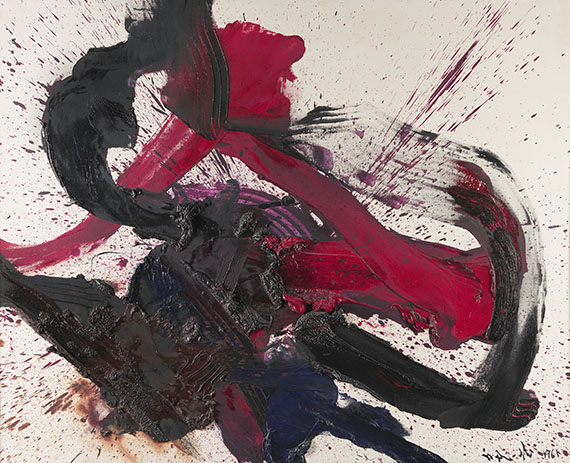Dictionary


Biomorphic Abstraction after 1945
Numerous artists, including Jean (Hans) Arp, Joan Miró and Yves Tanguy, who had already used biomorphic forms in the first half of the 20th century, continued to employ these organic, rounded, amoeba-like figurations post-1945. Jean Arp’s (1886-1966) sculptures, which he executed post-World War Two, were filled with a vertically growing, sprouting, strength, which manifested itself in convex outgrowths and cartilages. Biomorphic abstraction played a particularly important role in the work of British sculptors such as Henry Moore (1898-1986) and Barbara Hepworth (1903-1975). In Moore’s work, the biomorphic was directly linked to the violent power of nature, which was a source of inspiration and manifested itself in the work. In this sense, the organically formed, rampantly growing biomorphic style figurations in his post-1950 "Recumbants" visualise outwardly penetrating structural vital powers. The biomorphic principle is particularly visible in internal and external forms which are skilfully crossed into each other, and for which Moore had obviously adhered to notions of growth and becoming. Biomorphic figuration was not only visible in Moore’s sculptures, but also in a number of his graphic works. Barbara Hepworth’s oeuvre also contained an increased focus on the ovoid form. Life and art seemed to enter a special symbiotic connection; three-part ovoid objects appear in her work pre- and post 1945, and in 1934, the artist gave birth to triplets.
Numerous artists, including Jean (Hans) Arp, Joan Miró and Yves Tanguy, who had already used biomorphic forms in the first half of the 20th century, continued to employ these organic, rounded, amoeba-like figurations post-1945. Jean Arp’s (1886-1966) sculptures, which he executed post-World War Two, were filled with a vertically growing, sprouting, strength, which manifested itself in convex outgrowths and cartilages. Biomorphic abstraction played a particularly important role in the work of British sculptors such as Henry Moore (1898-1986) and Barbara Hepworth (1903-1975). In Moore’s work, the biomorphic was directly linked to the violent power of nature, which was a source of inspiration and manifested itself in the work. In this sense, the organically formed, rampantly growing biomorphic style figurations in his post-1950 "Recumbants" visualise outwardly penetrating structural vital powers. The biomorphic principle is particularly visible in internal and external forms which are skilfully crossed into each other, and for which Moore had obviously adhered to notions of growth and becoming. Biomorphic figuration was not only visible in Moore’s sculptures, but also in a number of his graphic works. Barbara Hepworth’s oeuvre also contained an increased focus on the ovoid form. Life and art seemed to enter a special symbiotic connection; three-part ovoid objects appear in her work pre- and post 1945, and in 1934, the artist gave birth to triplets.
Offers for Abstract Art Post-War
Headquarters
Joseph-Wild-Str. 18
81829 Munich
Phone: +49 89 55 244-0
Fax: +49 89 55 244-177
info@kettererkunst.de
Louisa von Saucken / Undine Schleifer
Holstenwall 5
20355 Hamburg
Phone: +49 40 37 49 61-0
Fax: +49 40 37 49 61-66
infohamburg@kettererkunst.de
Dr. Simone Wiechers / Nane Schlage
Fasanenstr. 70
10719 Berlin
Phone: +49 30 88 67 53-63
Fax: +49 30 88 67 56-43
infoberlin@kettererkunst.de
Cordula Lichtenberg
Gertrudenstraße 24-28
50667 Cologne
Phone: +49 221 510 908-15
infokoeln@kettererkunst.de
Hessen
Rhineland-Palatinate
Miriam Heß
Phone: +49 62 21 58 80-038
Fax: +49 62 21 58 80-595
infoheidelberg@kettererkunst.de
We will inform you in time.




